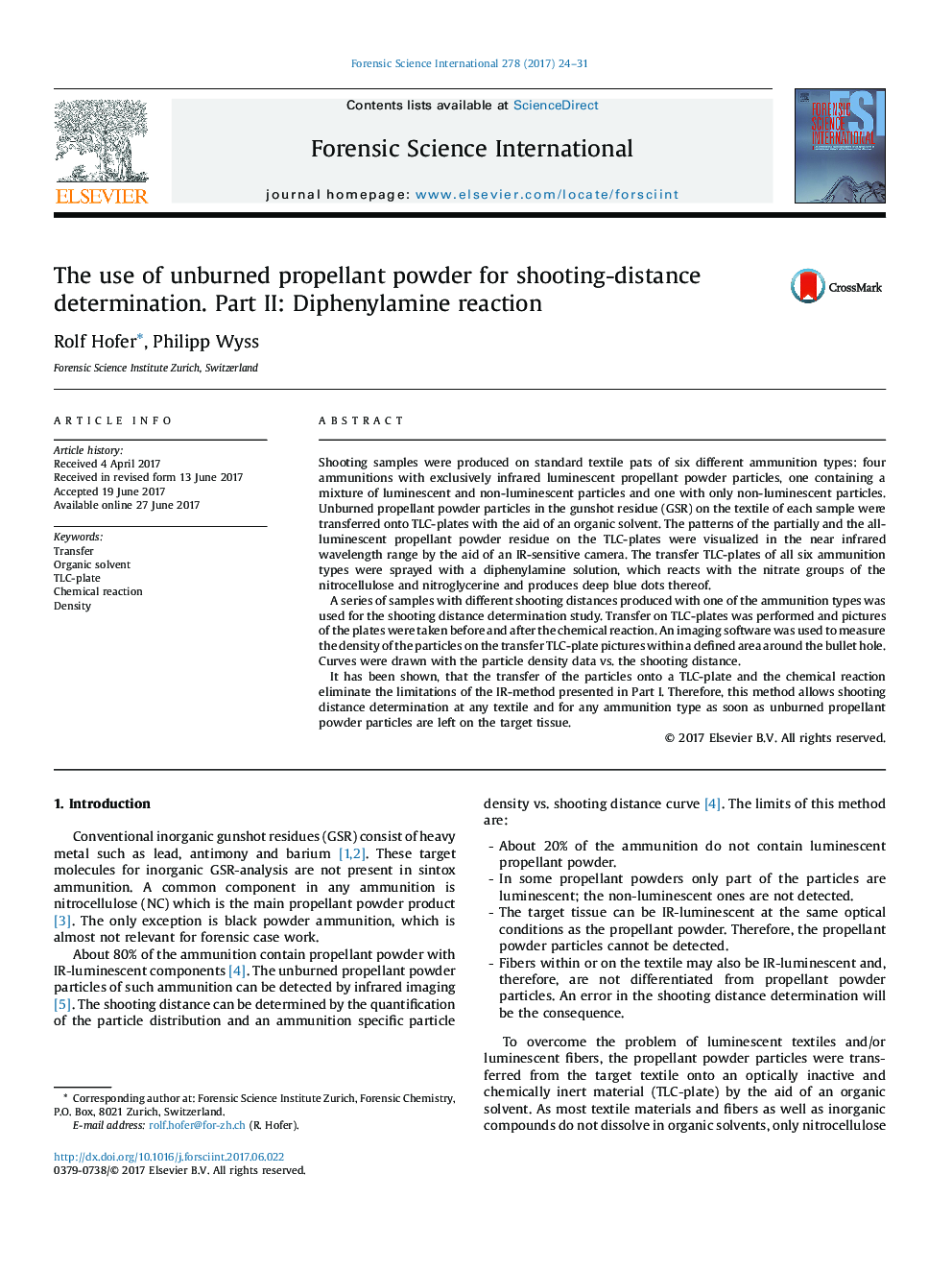| کد مقاله | کد نشریه | سال انتشار | مقاله انگلیسی | نسخه تمام متن |
|---|---|---|---|---|
| 6462183 | 1421972 | 2017 | 8 صفحه PDF | دانلود رایگان |
- The propellant powder particles were transferred from target tissues onto TLC-plates.
- The luminescent particles were visualized on the TLC-plates with an IR-sensitive camera.
- All propellant powder particles were detected by chemical reaction on the TLC-plate.
- The particle distribution was quantified for shooting distance determination.
Shooting samples were produced on standard textile pats of six different ammunition types: four ammunitions with exclusively infrared luminescent propellant powder particles, one containing a mixture of luminescent and non-luminescent particles and one with only non-luminescent particles. Unburned propellant powder particles in the gunshot residue (GSR) on the textile of each sample were transferred onto TLC-plates with the aid of an organic solvent. The patterns of the partially and the all-luminescent propellant powder residue on the TLC-plates were visualized in the near infrared wavelength range by the aid of an IR-sensitive camera. The transfer TLC-plates of all six ammunition types were sprayed with a diphenylamine solution, which reacts with the nitrate groups of the nitrocellulose and nitroglycerine and produces deep blue dots thereof.A series of samples with different shooting distances produced with one of the ammunition types was used for the shooting distance determination study. Transfer on TLC-plates was performed and pictures of the plates were taken before and after the chemical reaction. An imaging software was used to measure the density of the particles on the transfer TLC-plate pictures within a defined area around the bullet hole. Curves were drawn with the particle density data vs. the shooting distance.It has been shown, that the transfer of the particles onto a TLC-plate and the chemical reaction eliminate the limitations of the IR-method presented in Part I. Therefore, this method allows shooting distance determination at any textile and for any ammunition type as soon as unburned propellant powder particles are left on the target tissue.
Journal: Forensic Science International - Volume 278, September 2017, Pages 24-31
